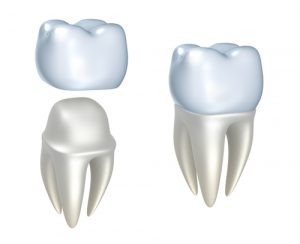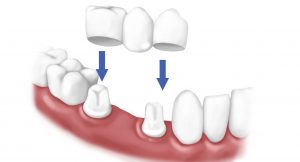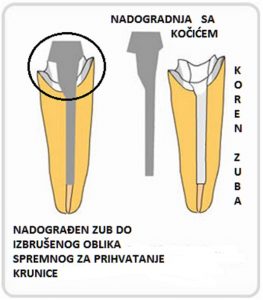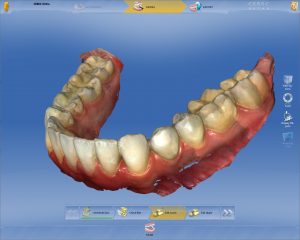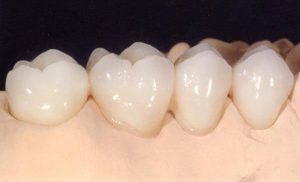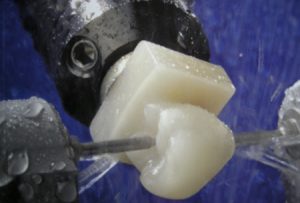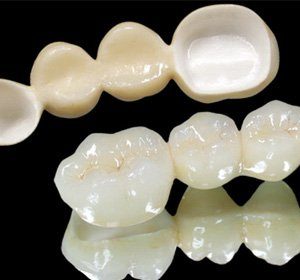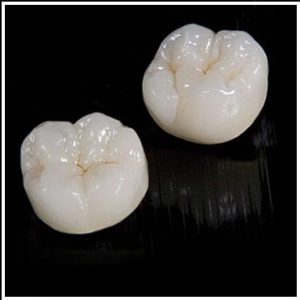Each tooth consists of a crown-visible part of the tooth and one or more roots. In cases when the natural crown of the tooth is more damaged and when it can no longer be repaired with a filling, or for aesthetic reasons – inappropriate shape, color, position of the teeth, artificial ones are made. crowns. It is necessary to grind such a tooth to the appropriate shape so that a “cover” can be placed on it, ie. an artificial crown that gives the tooth a new complete shape. Crowns can be metal-ceramic or ceramic, ie. “metal-free”.
If most or all of the natural crown of the tooth is missing prvo the so-called upgrade,
which upgrades the lost part to a polished shape, ready to accept the “cover”, ie. rosary. The upgrade usually contains as an integral part and pegwhich anchors the abutment at the root of the tooth.
If dental implants are installed in the patient’s jaw bone as a replacement for lost teeth, then special artificial crowns are made on them after a certain time.
METAL-FREE CERAMIC CROWNS are artificial crowns that do not have a metal base as metal-ceramic crowns, but are made entirely of special ceramics that are structurally reinforced, so metal as a base is unnecessary. This also increases the beauty of such crowns because metal is not seen through the ceramics as a gray shade, which is a very common occurrence with metal-ceramic crowns. In our office, metal-free crowns and bridges are made in one day, usually in one visit, and the patient comes out with ready-made “new teeth”, which is a great advantage in relation to metal-ceramic crowns and bridges whose production requires a few days. more arrivals. This is possible thanks to the digitalization of dentistry, ie the application of the most modern CAD/CAM sistema CEREC. The patient is necessary for grinding, ie. preparation of teeth and then making a virtual impression or recording the teeth and jaws with a special camera, after which he is free to wait for the restoration, which is a drastic shortening of the procedure and great comfort for the patient. The restorations are cut in a high-precision machine from blocks of solid finished reinforced ceramics, which further increases structural strength and other mechanical characteristics as well as beauty.
If there are toothless fields between existing teeth, jedanfrom the way of compensating for lost teeth and establishing a full dentition is making bridges. Bridges, as the name says, bridge the toothless part of the jaw and rely on the existing teeth, so it is necessary to grind the existing teeth to the appropriate shapes. Bridges consist of several interconnected crowns, some of which cover the ground abutment teeth and others fill the edentulous space and “act” new teeth. Like crowns, bridges can be metal-ceramic and ceramic, ie. “metal-free”.


